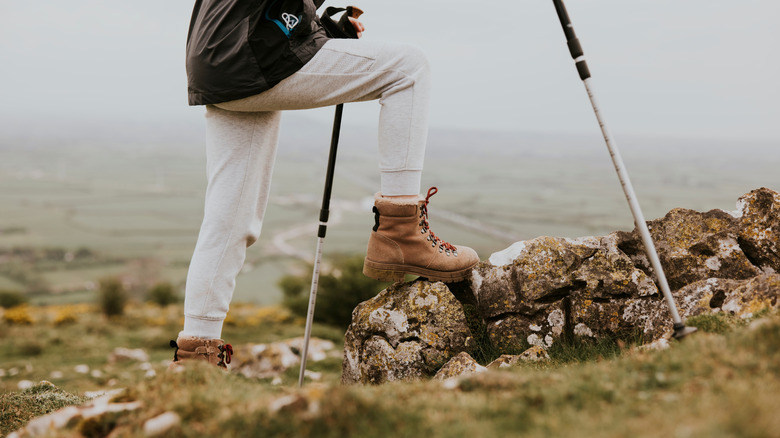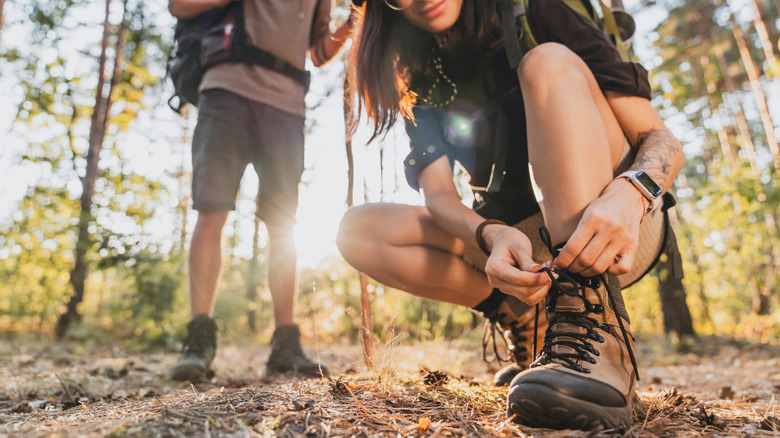Borrow This Rule From The Hiking Community And Only Buy Shoes For Sightseeing At This One Time Of Day
Whether you're headed to Iceland to hit up one of the best hikes in Europe or you're an experienced hiker gearing up to trek one of the trails at a U.S. National Park, one thing is for certain: You'll need to have the proper footwear. Nothing is more frustrating than buying an item that doesn't fit properly after you've left the store. Typically, when it comes to shoes, most people try them on for sizing; however, when it comes to hiking boots — or most athletic shoes, for that matter — certain times of day will give you the most accurate fit for your foot.
As many avid hikers will tell you, including Redditor u/DestructablePinata, it is best to try on your hiking boots after you've been on your feet a while. "Try boots and shoes on at the end of the day when your feet are most swollen ... That will give you the best fit," they advised. Throughout the day, the more you walk, the more your feet will swell, and they can even grow in size. Since hiking can be a strenuous activity and requires comfortable footwear, you'll want to make sure that you are trying on shoes when your feet are at their largest, so that when they do swell on the trail, you'll still have peak comfort. This also means, for those who have "half" sizes who must decide whether to size up or down, always size up.
Other tips for choosing the best hiking shoes
To ensure you get the perfect fit, it's best to bring the socks you plan to wear while hiking. The thickness of hiking socks can impact how a shoe fits, especially if you're wearing cushioned or moisture-wicking pairs designed for long treks. Also, try on both shoes and walk around the store. It may even help to test them on an incline if the store has a ramp. This helps simulate real trail conditions and ensures your toes don't hit the front of the boot when walking downhill.
Consider the type of terrain you'll be hiking on. A stiffer boot might be better and more durable for rocky trails, while lighter shoes with more flexibility are ideal for flatter paths. Don't forget to test for heel slippage, as your heel should stay in place without rubbing. Taking the time to test your shoes thoroughly can save you from painful blisters or foot fatigue down the road. For more advice on hiking, see our article on safety tips for your first solo hike.

